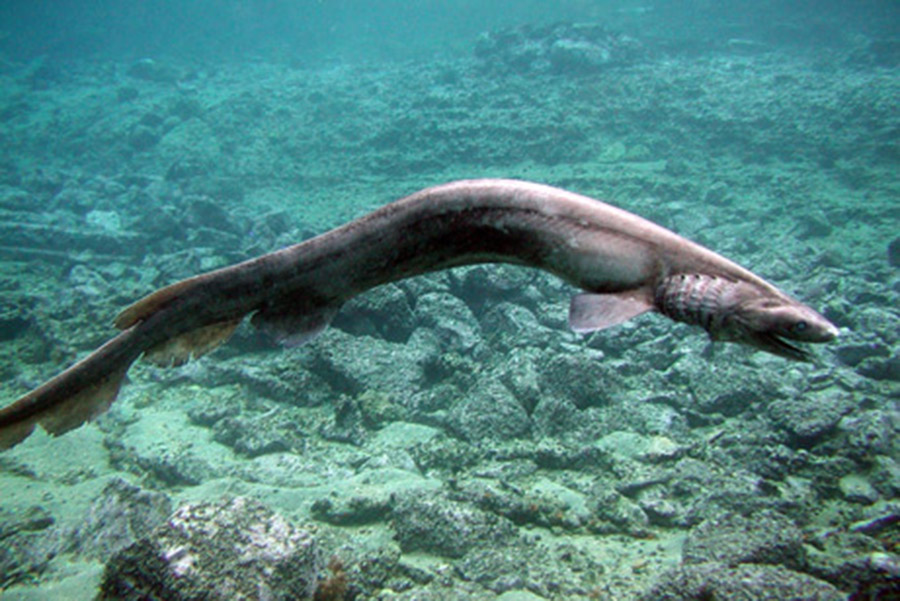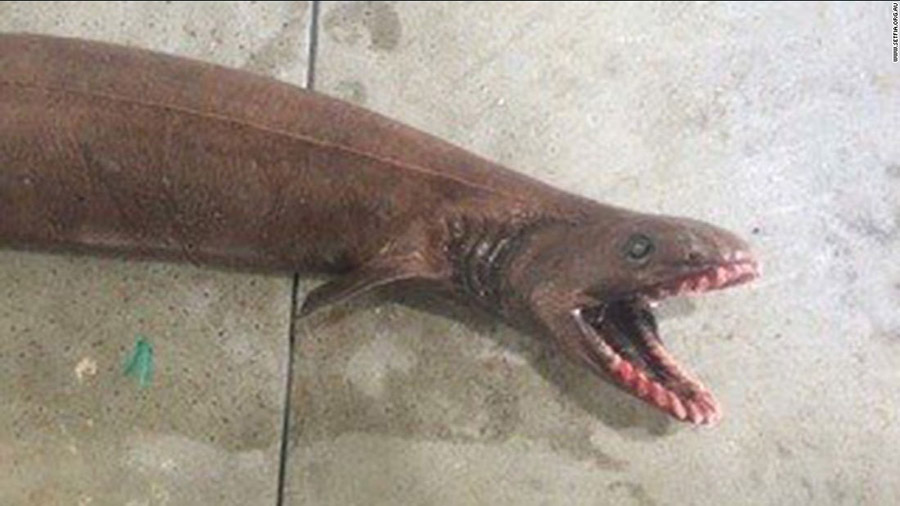A prehistoric and rare creature has been recently found in the Portugal, Algarve coast. Practically by accident, a team of researchers working for a European Union project in the area caught the snake-like shark aboard a trawler. According to the SicNoticiasTV coverage, the group was aiming to “minimize unwanted catches in commercial fishing” and ended up arriving with a fantastic finding.
This “living fossil” has enchanted scientists because it’s completely undeveloped — from the inside to the outside — as dinosaurs, such as the Tyrannosaurus Rex and Triceratops, used to live 80 million years ago among the same areas that we now inhabit.
Portugal’s Institute for the Sea and Atmosphere reported that this male shark measured 1.5 meters (5ft) in length and that it was found off the resort of Portimao among other fishes 700 meters (2,300 ft) down the ship the researchers were at.
Previous Japanese studies showed that this creature had not evolved at all because it lived deep down the ocean — at depths from 100 to 1,300 meters — where nutrients and other fish tend to lack. According to the scientists, this ancient shark’s diet consists in 61 percent of cephalopods — the class that animals like squids and octopus belong.

According to Professor Margarida Castro of the University of the Algarve, this creature was named after the amount of 300 frilled teeth it has. She told Sic Noticias that this set allows the creature to “to trap squid, fish and other sharks in sudden lunges.”
Its amount of teeth is well distributed in both jaws; it’s conformed by 6-gill slits, one dorsal fin.
One of the most impressing things of this frilled shark (Chlamydoselachus anguineus) is that it’s still living among us like other few species — although it’s believed that the number of living individuals has decreased due to all the years it’s lived.
Scientists still don’t know much about this ancient shark
However, due to the depths this shark lives at, the scientists say that this species is “little known in terms of its biology or environment.” It can be found in in the Atlantic and off the coasts of Australia, New Zealand, and Japan. They actually live on continental shelves and the nearshore areas of large islands, but some people have reported seeing and catching them in the open ocean.

There’s actually a very short set of studies of this species because people have discovered just a few individuals. Often, when a person finds one of this ancient creatures, they don’t usually get it to research laboratories. What we can for sure say is that this species is a “monster of the deep,” as the reporter called it.
Samuel Garman, the researcher who found this species in 1884 for the first time in history, once said that its snake or eel-like movements might have inspired sailors’ stories about big monsters and sea serpents.
Although some scientists have cut their fingers and hands manipulating the shark’s teeth while performing studies, this species does not represent any danger to humans due to the depth it lives at.
Source: BBC

question…….If it is still alive and not extinct.. Why call it ancient? Or Prehistoric… Is this fish that was caught thousands or millions of years old? No i am not asking about the species. I am asking about the fish itself.